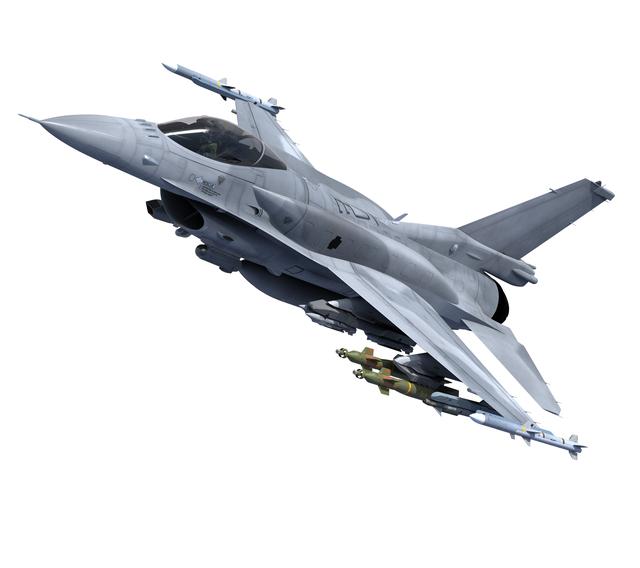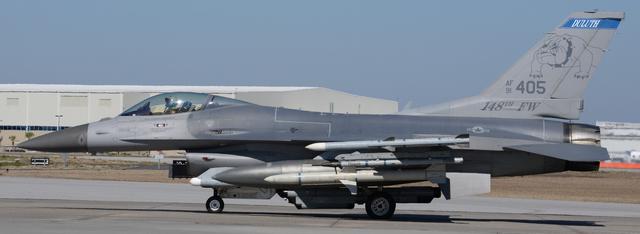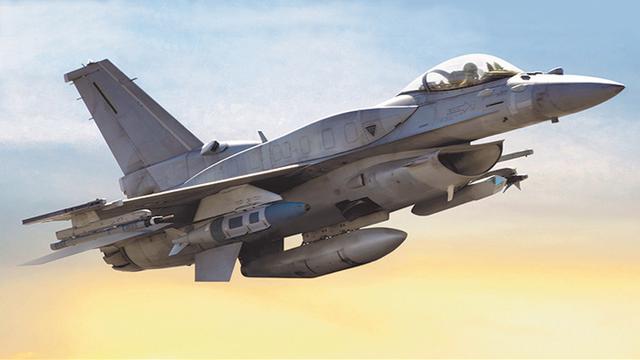Why the F-16 fighter jet remains a force to be reckoned with (updated 2025)
The F-16 Block 70/72 is the latest and most sought-after version of the fighter. (Photo: Lockheed Martin)
The list of countries that would like to get their hands on the F-16, whether that is the latest variant or upgrading its existing fleet to the Block 70/72 type, continues to grow.
Ukraine’s acquisitions of F-16s continue, although training for its pilots on the aircraft has slowed over the last year with more pilot training deemed ‘critical’ for its operational use in the country as President Zelensky said the country did not have enough pilots to fly the aircraft.
The first donated F-16s for the country from Denmark arrived in August 2024, with the second batch arriving in December. More F-16 aircraft also arrived in February from the Netherlands. Norway and Belgium have also promised F-16s to Ukraine.
Related Articles
CAE to build F-16 Block 70 sims for Taiwan
Turkey scales back F-16 deal while US shifts position on F-35s, minister claims
USAF conducts first F-16 Block 70 flight of L3Harris’ Viper Shield
As confirmed by the Ukrainian Ministry of Defence (MoD) in September 2024, Ukrainian pilots were currently undergoing training at the European Pilot Training Centre, in Fetesti Air Base in Romania. In December 2024, Romania signed a Letter of Intent, reaffirming its commitment with the Netherlands to the F-16 training centre.
In the same month, the US also announced a further $226 million package in support for Ukraine’s F-16s. However, despite President Trump’s executive order to free foreign aid, this reportedly does not affect military spending for Ukraine.
President Zelenskyy confirmed to Reuters in February 2025 that US military aid had not been cut, but talks on any new support packages had not been discussed.
Orders in the pipeline
Elsewhere, the previously reported gridlocked US-Turkey deal involving 40 F-16 Block 70/72 fighters softened over 2024. Interest in the jet from Turkey had rescinded, aligning more with its strategy of relying on the F-16s are mere interim solutions ahead of its indigenous Kaan jet.
While a possible Foreign Military Sale (FMS) worth US $23 billion was announced by the Pentagon in January 2024, in November 2024, the country’s defence minister Yaşar Güler said it would reduce the amount of the total package to US$7 billion, forgoing modernisation kits for its older F-16 models in favour of a domestically production solution. Güler also added that an initial undisclosed payment for the F-16s had already been made.
In Poland, the long-awaited sale to upgrade its existing 48 Block C/D 52 F-16s to the F-16V configuration was approved by the US State Department in October 2024, at a total cost of $7.3 billion.
 |  |  | |
| Title | F-16V Block 70/72 | F-16C/D Block 50/52/52+ | F-16E/F Block 60 |
|---|---|---|---|
| Categories | Fixed-wing aircraft | Fixed-wing aircraft | Fixed-wing aircraft |
| Subcategories | Fighter - multirole | Fighter - multirole | Fighter - multirole |
| Suppliers | Lockheed Martin | Lockheed Martin, Turkish Aerospace | Lockheed Martin |
| Region | NORTH AMERICA | NORTH AMERICA, MIDDLE EAST | NORTH AMERICA |
| Manufacturer Country | USA | USA, TÜRKİYE (TURKEY) | USA |
| Total Ordered | 249 | 775 | 80 |
| Total Delivered | 34 | 775 | 80 |
| Unit Cost (US$) | 63000000.00 | 34000000.00 | U |
| First Delivery Date | 2021 | 1991 | 2004 |
| Out Of Service Date | U | 2031 | 2036 |
| Status | In production | In production | In production |
| Entry URL | https://plus.shephardmedia.com... | https://plus.shephardmedia.com... | https://plus.shephardmedia.com... |
| Length 1 (overall) | 15.03m | 15m | 15m |
| Width 1 (overall) | 9.45m | 9.45m | 31m |
| Height 1 (overall) | 5.09m | 5.13m | 5.09m |
| Weight 1 (overall) | 21.77t | 17.88t | 21.77t |
| Speed 1 (maximum) | 1,303.46kt | 1,303.46kt | 1,303.46kt |
| No. of engines | 1 | 1 | 1 |
| Service life | 12,000 | 12,000 | 8,000 |
| Range 1 (overall travel) | U | 3,222.48km | 3,200km |
| Effective Altitude | U | 50,524.93ft | 50,000ft |
The different F-16 variants compared. ✅ This data has been verified by the same team that brings you Defence Insight. Want to learn more?
The F-16 Block 70/72
The F-16 Block 70/72, also referred to as the F-16V, is the latest and most sought-after version of the fighter – although Ukraine will receive older models. It is a fourth-generation multirole aircraft, targeted primarily at export customers.
The Block 70/72 features advanced avionics; an APG-83 AESA radar; a modernised cockpit; conformal fuel tanks; an Automatic Ground Collision Avoidance System; a centre pedestal display providing tactical imagery to pilots on a high-resolution 6×8 inch screen; and an extended structural service life of 12,000h.
Lockheed Martin developed the F-16V as an advanced fighter alternative that could leverage its existing production infrastructure and global support network. According to the manufacturer, structural and capability upgrades ensure that the F-16 can fly and fight up to 2070 and beyond, which is 50% longer than the previous production of F-16 aircraft.
Although the company has experienced difficulties with the production of the aircraft in recent years, reportedly due to challenges hiring new employees and training them, Lockheed Martin saw a ramp up in build rate for the aircraft throughout 2024 and delivering a total of nine by its third quarter versus two by the same quarter in 2023. It plans on continuing the ramp up this year by doubling its production rate in 2025 to an annual rate of 48 aircraft.
The F-16 is so popular that Lockheed Martin is, according to the manufacturer, wrestling with a backlog of 117 Block 70/72 aircraft at its Greenville site in South Carolina.

Recent deliveries include two aircraft to Slovakia in January 2024 – the first Block 70 aircraft to arrive in Europe. Bulgaria is also due to receive its first two aircraft by April 2025, with the first having arrived on the 31 January. According to Lockheed Martin, all 14 of Slovakia’s ordered F-16 Block 70/72 aircraft will be delivered by the end of 2025. Eight aircraft in total are expected to be delivered to Bulgaria by the end of 2025.
With an estimated cost of US$320 million, deliveries are also expected to occur for Taiwan’s F-16 Active Electronically Scanned Array Radars (AESAs) in 2025, with the contract also offering spare parts and ongoing support.
Current customers of the fourth-generation jet include Bahrain, Bulgaria, Greece, Jordan, South Korea, Slovakia and Taiwan, with Turkey and Poland still awaiting final approval or delivery of their F-16 deals.
The Philippines also shortlisted the F-16 aircraft in August 2024 for its multirole fighter aircraft procurement project. The Philippine Air Force launched the project to acquire around 40 aircraft, with a budget of US$1.1 billion allocated for the 10 aircraft in the first phase.
Looking ahead, upgrades on the F-16 are progressing apace, with L3Harris announcing its first successful test flight of its electronic warfare suite, Viper Shield, onboard an F-16 Block 70/72 aircraft. An EW suite designed for international customers procuring the Block 70 aircraft, test flights will continue throughout 2025, with deliveries expected by late-2025, according to L3Harris.
In a financial announcement made in late-January 2025 Lockheed Martin saw a 5% sales growth throughout its business in 2024. Lockheed Martin CEO James Taiclet Jr said there were a “whole slew of opportunities” for the F-16 aircraft, referencing Turkey as a particular country of note.
Liked this background story? For more in-depth data and information, request a demo on our Defence Insight market intelligence tool.
Related Equipment in Defence Insight
More from Air Warfare
-
![StormShroud enters service with UK RAF to suppress enemy air defences]()
StormShroud enters service with UK RAF to suppress enemy air defences
StormShroud is designed to support UK Royal Air Force (RAF) Lockheed Martin F-35B and Eurofighter Typhoon fighter aircraft by providing suppression of enemy air defences (SEAD). It is built around the Tekever AR3 uncrewed aerial system (UAS) and Leonardo BriteStorm electronic warfare (EW) jammer payload.
-
![Ground tests for CCA programme underway with flight tests to start mid-2025, says USAF]()
Ground tests for CCA programme underway with flight tests to start mid-2025, says USAF
The ground test phase for the Collaborative Combat Aircraft (CCA) programme will bridge the gap between prototype design and flight, laying essential groundwork ahead of fielding the uncrewed aircraft.
-
![Italian Army receives first UH-169D light utility helicopter]()
Italian Army receives first UH-169D light utility helicopter
The delivery is the first in a total of 25 helicopters on order, with all deliveries expected to be completed by 2027.






















